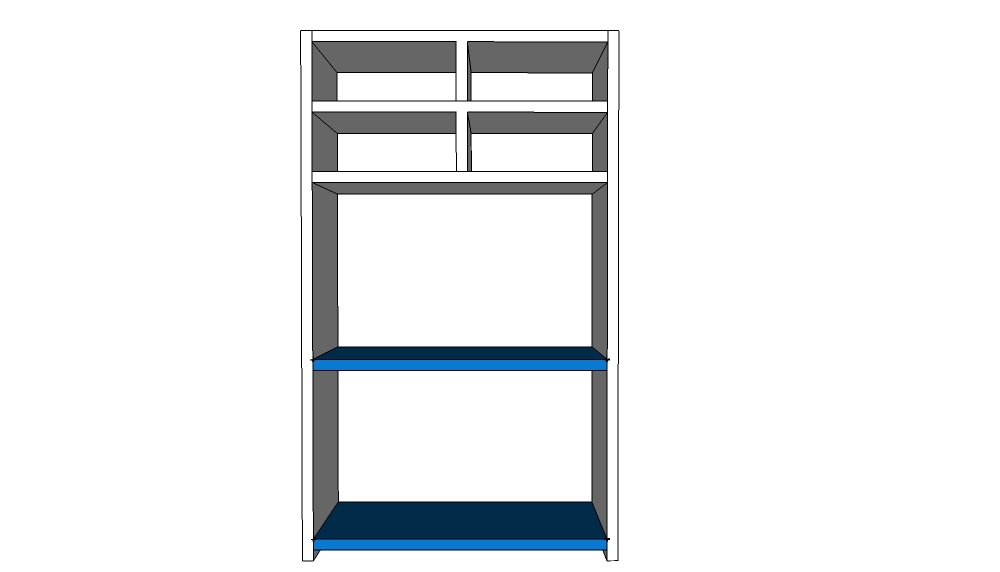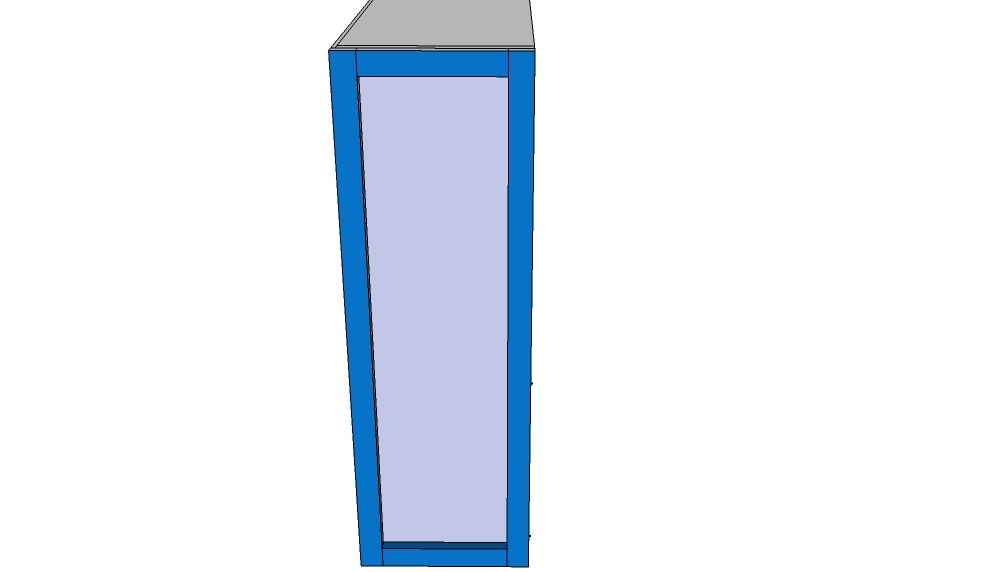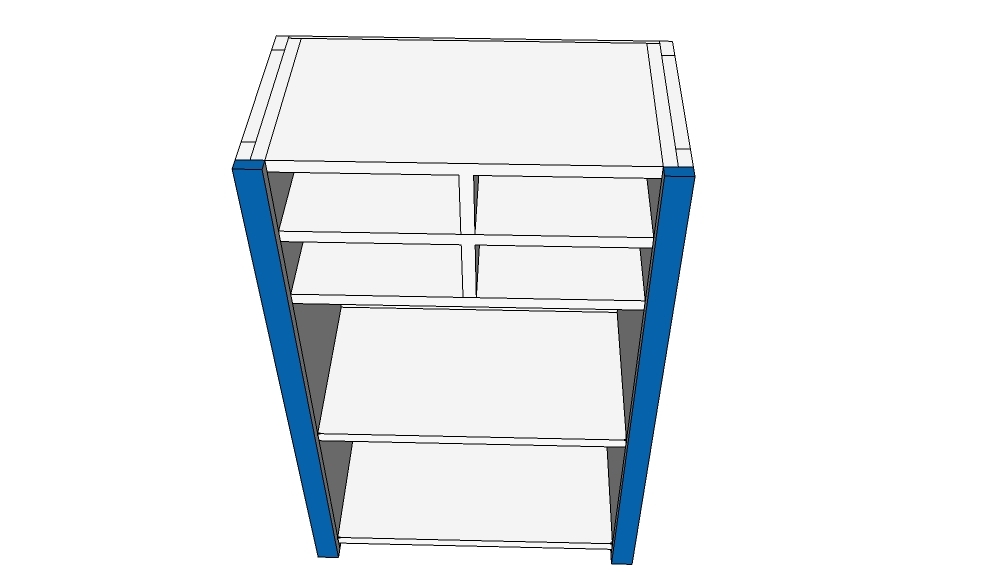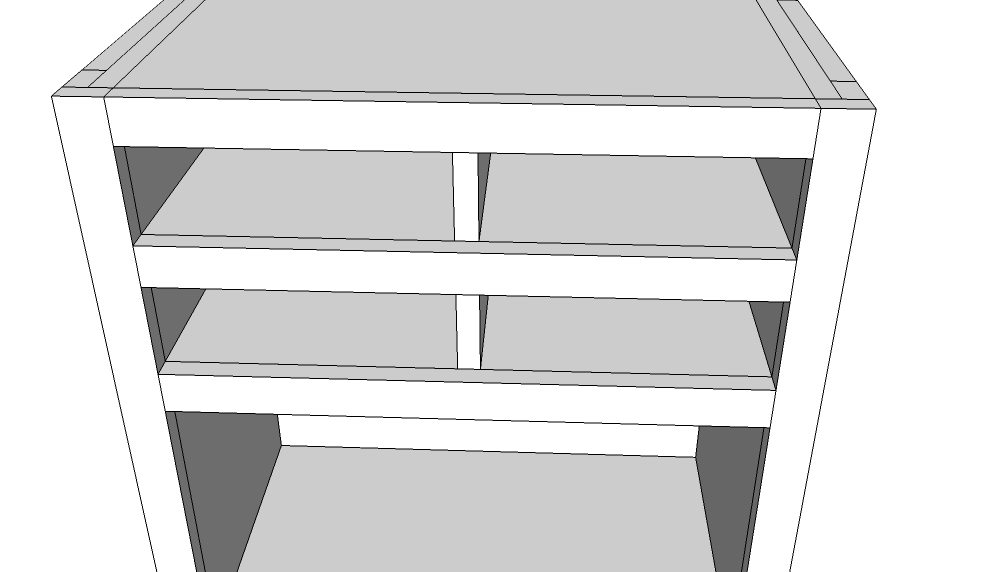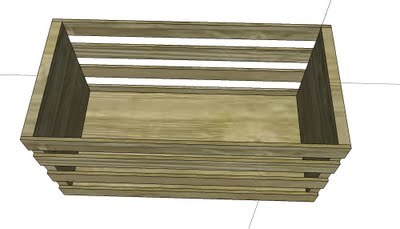Our little half bath on the main level was seriously lacking on storage. Our house needed a place for extra hand towels, magazines and diapers. Once I was sick of looking at the packs of wet wipes and diapers on the floor everyday, I decided to build this narrow multiple purpose storage tower.
The basket at the top is handy to display rolled up hand towels for guests. Just under is the always popular bathroom magazine storage. At the bottom, I made room for large crates to hold pull ups, diapers and wet wipes.
I made the wooden top out of left over ends of oak stair treads from a previous project when I had ripped out the carpet and rough 2x12 lumber on the staircase leading to the second floor. If you have any reclaimed lumber or pieces of wood you were saving for a project, this plan allows for you to use your imagination on the top.

Preparation
2 1"x12" (8') - Cut Down to 36" (2), 4" (2), 20" (5)
4 1"x2" (8') - Cut Down to 36" (6), 8 11/16" (4), 20" (5), 3 5/16" (2)
Optional back 36"x21.5"
Reclaimed, distressed or fun top - 12" x 25"
Nails, Paint, Wood Glue, Sand Paper
2 1"x12" (8') - Cut Down to 36" (2), 4" (2), 20" (5)
4 1"x2" (8') - Cut Down to 36" (6), 8 11/16" (4), 20" (5), 3 5/16" (2)
Optional back 36"x21.5"
Reclaimed, distressed or fun top - 12" x 25"
All the step by step instructions (plus tutorials for finishing with the distressed look and building the crates) at http://www.thequaintcottage.net/2011/09/storage-tower-with-magazine-bin…
Please read through the entire plan and all comments before beginning this project. It is also advisable to review the Getting Started Section. Take all necessary precautions to build safely and smartly. Work on a clean level surface, free of imperfections or debris. Always use straight boards. Check for square after each step. Always predrill holes before attaching with screws. Use glue with finish nails for a stronger hold. Wipe excess glue off bare wood for stained projects, as dried glue will not take stain. Be safe, have fun, and ask for help if you need it. Good luck!
Instructions
Step 1
Step 2
Step 3
Step 7
Step 11
Simple plans for storage crates for the lower shelves.
http://www.thequaintcottage.net/2011/09/wooden-crates.html
It is always recommended to apply a test coat on a hidden area or scrap piece to ensure color evenness and adhesion. Use primer or wood conditioner as needed.













